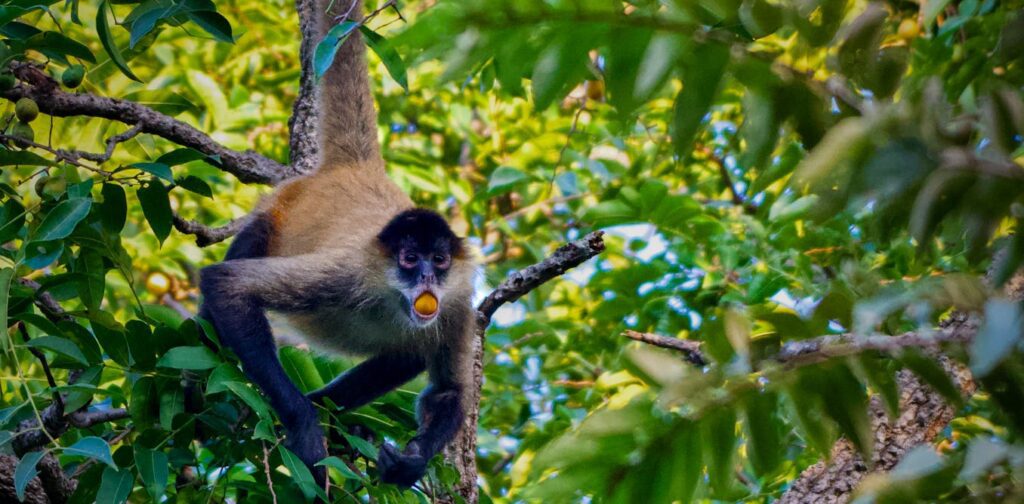Alcohol ingestion by animals is surprisingly widespread – and we’re starting to understand its impact

Humans may not be the only animals that ingest alcohol, research is suggesting. Studies on animals are showing they may be eating natural ethanol for its medicinal or nutritional properties.
Humans drink alcohol in almost every part of the world, apart from places where people abstain for religious reasons. In the past, many people believed alcohol consumption was unique to humans, but growing evidence is showing we aren’t alone in our taste for booze.
It has long been known that vinegar flies are closely linked to alcohol given their tendency to breed on fermented fruits. However, it turns out they are not an outlier.
When you think of alcohol, you may think of a pint of beer or a glass of wine. But there are many types of alcohol, most of which are extremely toxic. For example, isopropanol (rubbing alcohol), which is commonly used as a disinfectant.
Ethanol, or ethyl alcohol, is the alcohol found in alcoholic beverages, but ethanol is also prevalent in nature. Yeasts, including Saccharomyces cerevisiae, also known as brewer’s yeast, are widespread in the natural environment and produce ethanol (possibly to defend the plant’s sugary resource from competing microorganisms), when they metabolise sugars via fermentation. Many fruits, nectars and saps contain an abundance of sugars. Some of this sugar becomes ethanol when colonised by yeast.
Fruit from plants in Panama, Costa Rica, Singapore, Israel and Finland have been found to contain ethanol, as well as some nectars and saps. The concentration of ethanol in naturally fermenting fruit is typically much lower than those in human-made alcoholic beverages, but some overripe fruit, such as fruits of the black palm (Astrocaryum standleyanum) have ethanol levels similar to a standard beer (5%).
If fruit, nectars and saps ferment in the wild, it is not surprising that some animals may ingest ethanol. Studies, experimental and in the wild, have confirmed insects (including honeybees and butterflies) ingest it, as well as birds (such as hummingbirds, cedar waxwings and bohemian waxwings) and mammals (for example, pen-tailed tree shrews and the slow loris). Non-human primates, including one of our closest living relatives the chimpanzee, ingest it too.
Although examples in the wild are rare, this may be due to lack of research rather than prevalence. Researchers are developing methods that make it easier to measure ethanol in the field, and as more research is conducted, more examples will probably be discovered.
Do animals get drunk?
There are many anecdotes of “drunk” animals, from moose to elephants, but none of these cases have actually been validated. From an evolutionary standpoint, being drunk is disadvantageous. Intoxicated animals could be more susceptible to injury or predation, and less likely to survive.
Instead, many scientists expect natural selection would favour adaptations for increased ethanol metabolism to avoid becoming “drunk”. This allows animals to eat fermented foods while minimising the negative effects of intoxication.
In animals, including humans, the primary metabolic route for ethanol is similar. Ethanol is first oxidised to acetaldehyde (a toxic intermediate) by the enzyme alcohol dehydrogenase.
Acetaldehyde is then converted to acetate (which is less toxic) by aldehyde dehydrogenase. Yet, the efficiency at which different animals metabolise ethanol varies. It can vary between humans too.
Some animals appear to have enhanced ethanol metabolism. Much like humans, chimpanzees, gorillas and bonobos share a mutation that make them particularly efficient at metabolising ethanol.
Interestingly, the only Asian great ape (orangutan), which is highly arboreal (tree-dwelling), doesn’t share this mutation. This may be because orangutans did not experience the same evolutionary pressures as the more terrestrial (ground-dwelling) African great apes.
For example, orangutans primarily feed in trees where fruit is expected to be less fermented than when it falls to the ground.
Adult female chimpanzee feeding on ripe Spondias mombin
Kimberley Hockings, CC BY-NC-ND
It is possible that if sugary foods ferment naturally, then animals that eat these foods may consume ethanol without meaning to. Ethanol may have some benefits. It has antimicrobial properties and vinegar flies are known to use it to self-medicate against parasites. However, not much is known on whether other animals also use ethanol for medicinal purposes.
There are confirmed sightings of many animals, from chimpanzees to orangutans using plants for medication, so the use of ethanol in this way could be widespread. Animals may also ingest food with ethanol in it because ethanol itself is a source of calories and its presence indicates sugar and nutrient content.
Ambrosia beetles use the smell of ethanol as a cue to find suitable host trees to colonise. The ethanol increases the growth of fungi which the beetles feed on.
Many of us are keenly aware of ethanol’s cognitive impact, including feelings of relaxation. Ethanol might play a significant role in promoting sociality among humans. This may also apply to other species, but has yet to be studied in a natural context.
We still have much to learn about wild animals’ natural use of ethanol. Many
hypotheses remain untested, and we know little about whether animals seek out ethanol and fermented foods. But many animals ingest it. It is clear the party is growing, and we are just one of many species that partake in ethanol.






